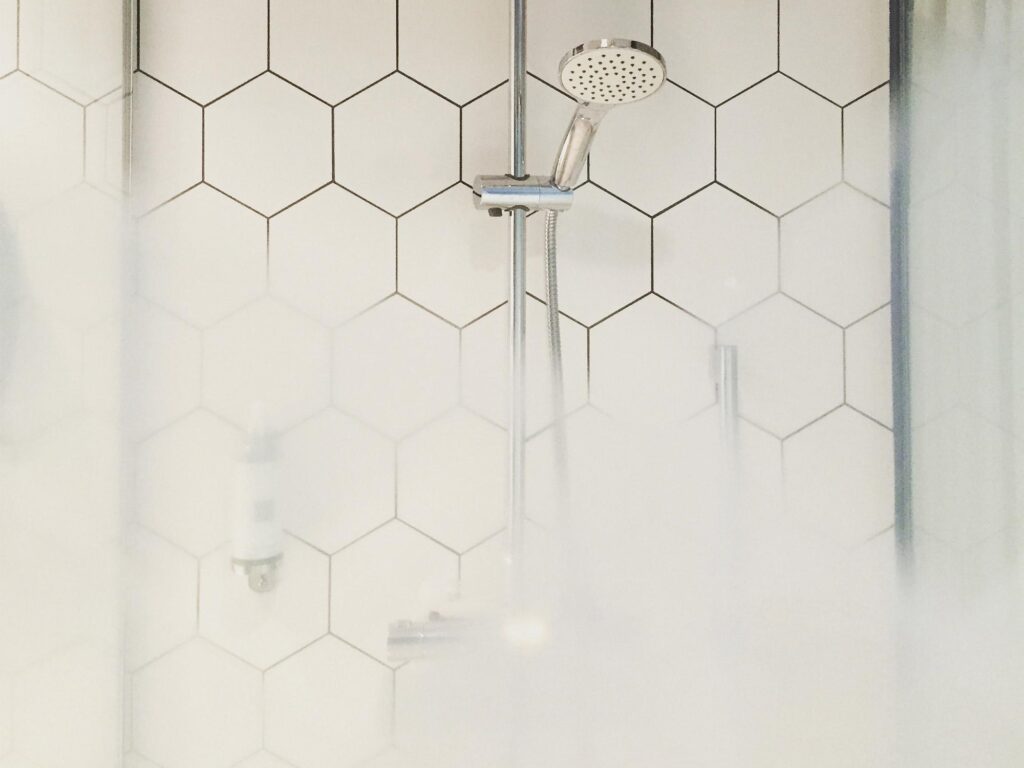
What’s the first thing you think of when contemplating a dream bathroom? A gorgeous sink, standout tiles, a luxurious rainfall showerhead? Whatever it is, you’re probably not thinking about bathroom ventilation.
Ventilation is a bit of a boring subject. However, it’s arguably the most important one. Without proper ventilation like a ceiling exhaust fan your bathroom will soak up excess moisture from showers. Body odours and other smells will linger, too. It’s just not a good experience without one.
There are also several government regulations in place that must be followed. Proper ventilation is not something you can cut corners on. Thankfully it’s really not that complicated.
So whether you want to call in your local air quality experts or tackle the job yourself, you can be a bathroom ventilation expert in no time. Here’s everything you need to know.
Bathroom Ventilation Legal Requirements
In Australia, your ventilation requirements are regulated by the Building Code of Australia.
For residential purposes, your legal requirements really aren’t that complicated. The Building Code of Australia simply requires all bathroom fans to have a minimum extraction capacity of 25 litres per second.
Separate toilet spaces also require a ceiling fan with the same 25 litres per second extraction capacity. Laundries are slightly different and can get away with a reduced extraction capacity of 20 litres per second.
Your ventilation requirements will also include the windows. Bathroom windows must equal at least 10% of the room’s floor space (square metres), while their opening size must be at least 5% of the floor space.
This ensures that you always have the ability to create crosswinds for ventilation. Meanwhile, you can also use a window or bathroom ceiling fan in isolation if one or the other temporarily cannot be used.
Finally, mechanical ventilation systems also have to comply with relevant regulations, including Australian Standards 3666.1 Air handling and water systems of building – Microbial control and 1668.2 Mechanical ventilation for acceptable indoor air quality. As these systems are more specialised to install it’s best to speak to a licensed electrician.
Benefits of Ceiling Exhaust Fans
Sure, you are required to have a ceiling exhaust fan for your bathroom ventilation purposes. But that doesn’t mean you should ignore the benefits it delivers. It’s a crucial piece of equipment that will truly go above and beyond removing steam from your mirror after a shower. These are the top benefits.
Reduced Moisture and Condensation Levels
Hot showers create a large amount of moisture, there’s no denying that. Whether it’s steam, condensation or spillage and splashing, it’s the wettest room in a house for a reason. But despite the best efforts of waterproofing, damage will occur without the use of an exhaust fan. That’s why proper ventilation is so important. It will extract steam and moisture from the enclosed space, reducing long term condensation levels.
Mould and Bacteria Prevention
The prevention of mould and bacteria growth is a flow-on effect of reduced moisture levels. Bacteria and black mould love moist, dusty and dirty corners of the world. That’s why you often see mould on shower tiles and the corners of a bathroom. But with the help of a thorough ventilation system you can maintain a clean space that does not promote mould growth. It’s good for your health and aesthetics.
Odour Removal
From the smell of damp to bodily odours and other scents – both good and bad – your ceiling fan will help clear the air right up. On one hand, it’s fantastic for removing bad smells you don’t want, like wet dog, body odour or other toilet smells. Meanwhile, on the other hand, if you have just sprayed some perfume you can switch the fan on to remove allergens for others.
Long Term Bathroom Maintenance
All up, the above reasons contribute to ongoing bathroom maintenance. You are able to keep a clean space that also prolongs the lifespan of bathroom materials. For example, wall paint will retain less moisture, while wooden doors and fittings take on less wear and tear. Utilising your bathroom ventilation is a great way to keep your bathroom in top shape for longer.

Types of Bathroom Ceiling Fans
It might be easiest to go for the cheapest model on the market when choosing the right bathroom ceiling exhaust fan. However, it’s always best to do your research as there are several quality options available.
Ceiling Exhaust Fans
Ceiling exhaust fans are mounted and installed in your ceiling space. Air is drawn in from the bathroom and expelled into either the roof cavity or outside through an external vent. Options include traditional round vents, or fancier grilles and concealed panels.
Wall Exhaust Fans
In some instances you cannot install an exhaust fan in your ceiling. This is when you take advantage of wall/window exhaust fans that can be installed on external facing walls. It will require some precise glass cutting and construction work, however.
Mechanical Ventilation Systems
Mechanical exhaust fans, also known as inline exhaust fans, contain a motor-operated propeller. They are designed for a range of purposes with both short and long ducted options available. You will most likely want an inline exhaust fan when there is limited ceiling space to vent air into. The motor delivers quiet, efficient venting without sounding like you’re running a motorcycle in the ceiling.
Ceiling Exhaust Fan and Heat Light Combo
Perhaps one of the most popular options available, you can combine heat lights in the bathroom with an exhaust fan. Design and functionality combines with light, warmth and ventilation. These units can easily be purchased at a hardware store, and there’s always a size/capacity option to suit your individual needs.
Measurement Considerations
Alongside the extraction capacity of 25 litres per minute, you also want to consider the cubic metre per hour (m3/h) capacity. This is so you can choose an exhaust fan that will handle anything your bathroom throws at it.
To understand your requirements, a handy formula is length x width x height of your bathroom. For the purpose of this, it doesn’t matter which measurement you choose as width or length. So, say your bathroom is 3.3 metres long by 2.4 metres wide with 2.7 metre-high ceilings, your equation is 3.3 x 2.4 x 2.7 = 21.4 m3. That means you need an exhaust fan that operates at least at 22 m3/h.
Now, the good news is that most exhaust fans should easily cover your requirements. Typical ceiling exhaust fans deliver a performance of 160-180 m3/h, while inline exhaust systems can easily double the extraction capacity.
Your focus will realistically be on the lower-end models and the ones to avoid.
Installation Priorities
When it comes to installation itself there will be a few key priorities. From the perfect location to space requirements, you want to be sure you maximise efficiency and economy.
Location of the Exhaust Fan
You want your bathroom exhaust fan to be located in a prime location. There’s no point tucking it away in the corner when the shower is on the opposite side of the room. It needs to be in a location where it will provide maximum extraction.
However, that doesn’t mean it should be right above the shower. Your bathtub and sink will also create steam if you use both with high amounts of hot water. Therefore, a central placement in the ceiling is often best. It also avoids direct exposure to moisture that might otherwise create drip marks on the exhaust fan.
For wall mounted exhaust fans your choices will be limited to external facing walls, so be sure to place it in the most open and convenient location. You can always ask a licensed electrician for the best advice on where it should go.
External Bathroom Venting
Another important consideration is the space in your ceiling space. Some exhaust fan systems, mechanical or otherwise, have ductwork leading out of the house. It’s often put in place when you cannot naturally vent steam and other exhaust into the roof cavity.
Key planning includes knowing what length of ductwork is required and whether you need a motorised system or not. Additionally, ductwork will require installation access in potentially tight spaces. Expertise will also be required for any hands-on alterations.
Bathroom Ventilation Price
In terms of a simple exhaust fan prices start from as low as $35. The upper end of the market, including inline exhaust fans, stretches out to around $200.
However, there is a touch more to the overall cost for bathroom ventilation. Associated parts and labour costs will vary depending on what is required. Any construction linked to installation increases the price when compared to a simple like-for-like replacement.
Because of all the external factors involved you have to be ready for flexible costs. However, the long term benefits of correct bathroom ventilation will certainly reward any upfront expenses. It’s an affordable choice that will keep your bathroom healthy for years to come.

